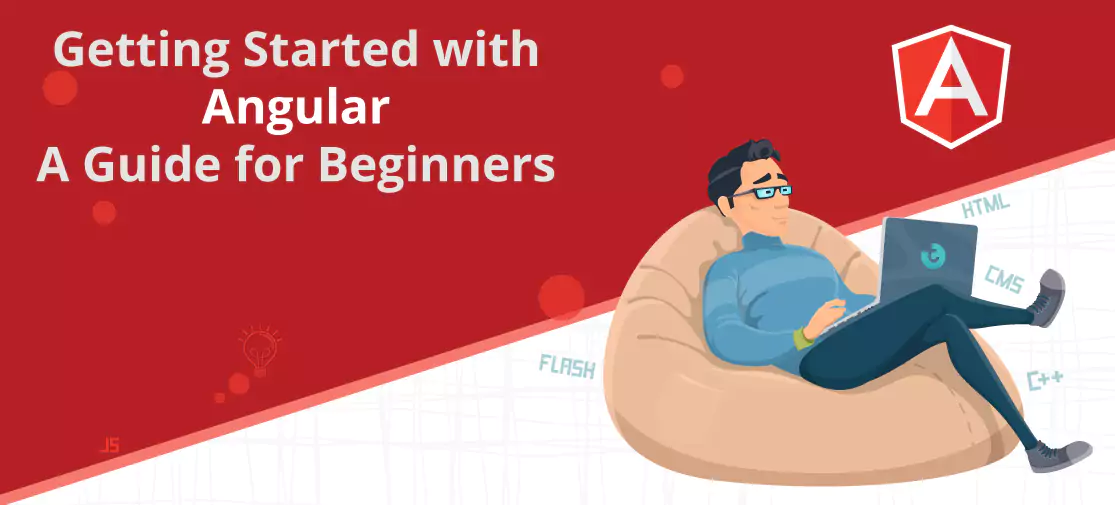Introduction
Angular is a popular and powerful JavaScript framework that allows developers to build dynamic and robust web applications. Angular is a JavaScript framework for building single-page applications (SPAs). It is a powerful framework that can be used to create complex and dynamic web applications.Whether you are a seasoned developer looking to add new skills to your repertoire or a beginner taking your first steps into the world of web development, Angular is an excellent choice. In this comprehensive guide, we will walk you through the process of getting started with Angular, from installation to building your first project. So, let's dive in!
Understanding angular and its benefits
Before we delve into the technical aspects, let's briefly explore what Angular is and what makes it so special. Angular is a front-end framework developed and maintained by Google. It follows the Model-View-Controller (MVC) architectural pattern, providing a structured approach to building web applications. The benefits of Angular include:
- Enhanced code organization and maintainability through modularity.
- Two-way data binding ensures the automatic synchronization of data
- between the model and view components.
- Dependency injection for better code efficiency and reusability.
- A robust set of tools and libraries to ease the development process.
Setting up your development environment
If you are new to Angular, this guide will walk you through the basics of getting started. We will cover the following topics:
- Installing Angular
- Creating a new Angular project
- Understanding Angular components
- Using Angular directives
- Binding data to Angular components
- Routing in Angular
- Testing Angular applications
By the end of this guide, you will have a good understanding of the basics of Angular and be able to start building your own Angular applications.
Prerequisites
Before you start this guide, you should have a basic understanding of JavaScript. You should also have Node.js and npm installed on your computer.
Installing angular
The first step is to install Angular. You can do this by running the following command in your terminal:
npm install -g @angular/cli This will install the Angular CLI, which is a command-line tool that you can use to create and manage Angular projects.
Creating a new angular project
Once you have installed the Angular CLI, you can create a new Angular project by running the following command:
ng new my-appThis will create a new directory called my-app with a basic Angular project.
Understanding angular components
The basic building block of an Angular application is a component. A component is a self-contained piece of code that encapsulates HTML, CSS, and JavaScript.
To create a new component, you can use the Angular CLI. For example, to create a component called my-component, you would run the following command:
ng generate component my-componentThis will create a new file called my-component.component.ts. This file contains the TypeScript code for your component.
Using angular directives
Angular directives are special instructions that you can use to modify the behavior of HTML elements. There are many different types of directives, but some of the most common ones include:
- Structural directives : Structural directives are used to change the structure of the DOM. For example, the
*ngFordirective can be used to repeat an element a specified number of times. - Attribute directives : Attribute directives are used to add custom attributes to HTML elements. For example, the
ngClassdirective can be used to dynamically add or remove CSS classes from an element. - Event directives : Event directives are used to listen for events on HTML elements. For example, the
ngClickdirective can be used to execute a function when an element is clicked.
Binding data to angular components
One of the most powerful features of Angular is its data-binding capabilities. Data binding allows you to connect the data in your Angular components to the data in your HTML templates.
There are two types of data binding in Angular:
- Property binding : Property binding is used to bind the value of an HTML element to a property in an Angular component. For example, you could use property binding to bind the value of an input element to the name property of a component.
- Event binding : Event binding is used to bind an event on an HTML element to a method in an Angular component. For example, you could use event binding to bind the
clickevent on abuttonelement to a method calledonClickin a component.
Routing in angular
Angular applications can be divided into different pages or views. Routing is the process of navigating between these pages or views.
To use routing in Angular, you need to create a routing configuration file. This file is called app-routing.module.ts. In this file, you can define the different routes in your application.
Testing angular applications
It is important to test your Angular applications to ensure that they work correctly. Angular provides a number of testing tools that you can use to test your applications.
One of the most popular testing tools for Angular is Karma. Karma is a test runner that can be used to run unit tests and end-to-end tests.
Learning more about angular
- Handling forms in angular: Forms are a critical aspect of any web application for user input. Angular provides powerful tools for creating and validating forms easily. Learn about template-driven forms and reactive forms, and explore various form controls and validation techniques to create user-friendly and error-free forms.
- Working with HTTP and APIs: Modern web applications often communicate with backend servers through APIs (Application Programming Interfaces). Angular's built-in HTTP client makes it seamless to perform HTTP requests and handle responses. Discover how to fetch data from APIs, send data to the server, and handle error scenarios effectively.
- Optimizing performance: As your Angular application grows, performance becomes crucial. Explore various techniques to optimize your application's performance, including lazy loading modules, code splitting, and implementing Change Detection strategies effectively.
- Testing angular applications: Testing is an essential part of the development process to ensure the reliability and stability of your application. Learn about different testing techniques in Angular, including unit testing, component testing, and end-to-end testing using tools like Jasmine and Protractor.
- Deploying angular apps: Once your application is ready, you'll need to deploy it to a web server to make it accessible to users. Discover different deployment options for Angular applications, including hosting on platforms like Firebase or GitHub Pages, and configuring production builds for optimal performance.
- Engaging with the angular community: The Angular community is vibrant and welcoming, with numerous resources to support your learning journey. Join forums, follow blogs, attend meetups, and engage on social media platforms to connect with fellow Angular developers, seek help, and share your knowledge.
Conclusion
This guide has provided you with a basic introduction to Angular. By following the steps in this guide, you will be able to create your own Angular applications. Learn the basics of Angular and kickstart your web development journey with this concise, step-by-step guide. With these essential skills, you're ready to embark on your web development journey using Angular. Happy coding!




